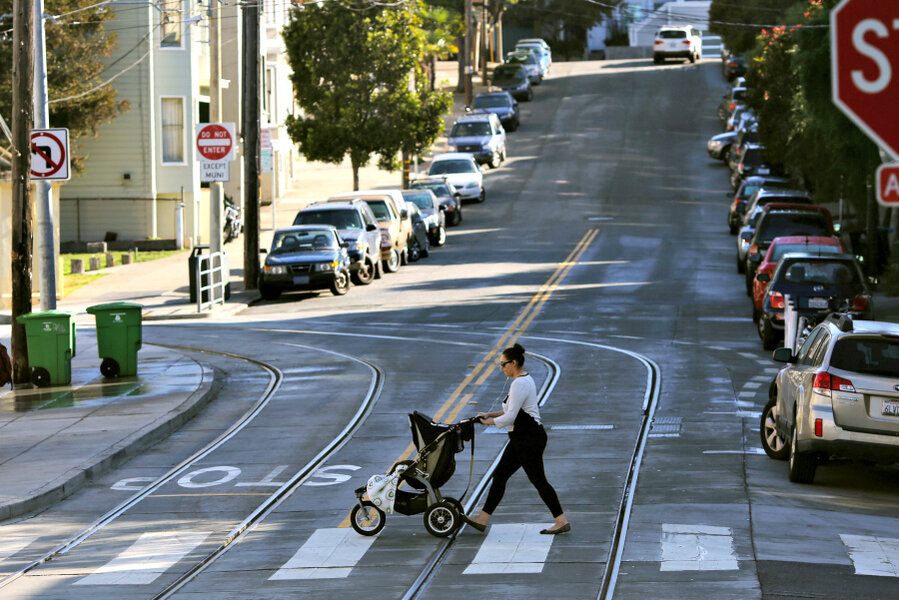Molly Cantrell-Kraig uses a car as a vehicle to transform women
Loading...
Molly Cantrell-Kraig was a single mother of a four-month-old daughter when she began her journey as a nontraditional college student. Without a car of her own, she would hitch a ride to class from a friend.
She graduated with a degree in journalism and was eventually able to buy a car. She began work in the newspaper industry, and her daughters were raised in a newsroom. She brought a crib to the office, and after deadlines passed, the paper’s sportswriters would carry her sleeping child to that car.
For Ms. Cantrell-Kraig, building skills, gaining experience, and achieving a greater level of autonomy took time – as well as access to reliable transportation. This truth became more evident as she began to volunteer on the boards of local nonprofit groups.
“I began to see that although there is a wide number of programs available to help women with job training, education, or other capacity-building skills, nothing exists in a systemic, concentrating fashion to supply transportation,” she says, citing research that identifies lack of transportation as the chief welfare-to-work programs fail. “Having been in that situation and having overcome it, I felt it incumbent upon me to provide a solution.”
Cantrell-Kraig’s desire to help became the Women With Drive Foundation (WWDF), a nonprofit group that assists women whose only barrier to self-sufficiency is the lack of transportation.
Through collaboration with social service agencies and businesses, WWDF identifies and vets women who are working toward self-sufficiency. It provides them with a vehicle and a range of other support services. In exchange, the women engage in an intensive, two-year program designed to help remove barriers to their employment.
The program is tailored to each client and includes services such as General Educational Development (GED) courses, which can lead to a certificate that is equivalent to a high school diploma; job training, and financial literacy.
“WWDF is an exercise in ‘social physics,’ ” Cantrell-Kraig says. “In order to alter the orbit of a body, one must enact an outside force on it in order to change its path. Our goal is to ... identify women who have taken ownership of their own trajectory and to help them alter it.”
The organization launched in Iowa four years ago, working closely with the state Department of Human Services (DHS) and other public and private agencies.
It was in Iowa that one of WWDF’s success stories unfolded. The mother of six children had been living in a homeless shelter. The woman – whose name is withheld for her safety – was able to secure an apartment, a job, and medical care for her children in large part because she was able to secure her own vehicle through WWFD.
Roughly six months into the program, however, she faced abusive treatment from her partner and the father of some of her children. “With the help of [the Department of Human Services] we were able to leverage the car and other programs that exist within the DHS to remove the children from a scary space,” Cantrell-Kraig says.
Access to a car helped the client focus her attention on her future, rather than her past, Cantrell-Kraig says, and helped her combat negative messages from her abuser that she could not succeed.
As news of WWDF and its impact in Iowa began to spread, the tiny organization was inundated with requests – even requests from women in other countries. Determined to grow the organization, Cantrell-Kraig has moved operations to Chicago.
“Even in urban centers there is a dearth in flexibility in terms of transportation,” she says, noting that the difficulties of using public transportation due to cost, schedules, and logistics often make it very difficult to use.
The WWDF model involves purchasing a car for use by a client, who is responsible for taxes, title fees, and licensing. Servicing of the vehicle is covered throughout the two years of her participation in the program, which also involves financial coaching to encourage saving and comprehensive planning for the future.
“We are hoping to inoculate people against poverty,” Cantrell-Kraig says. “I would like to change the nature of how we handle poverty in this country.”
She would like to form more partnerships with organizations such as auto body shops, which could providing servicing to vehicles in the program. And someday she'd like to expand beyond Chicago.
“We are not about transportation. We’re about transformation,” Cantrell-Kraig says. “Our goal is to help women become themselves. The car is our ‘vehicle.’ ”
• To learn more about Women With Drive, visit www.womenwithdrive.org.







